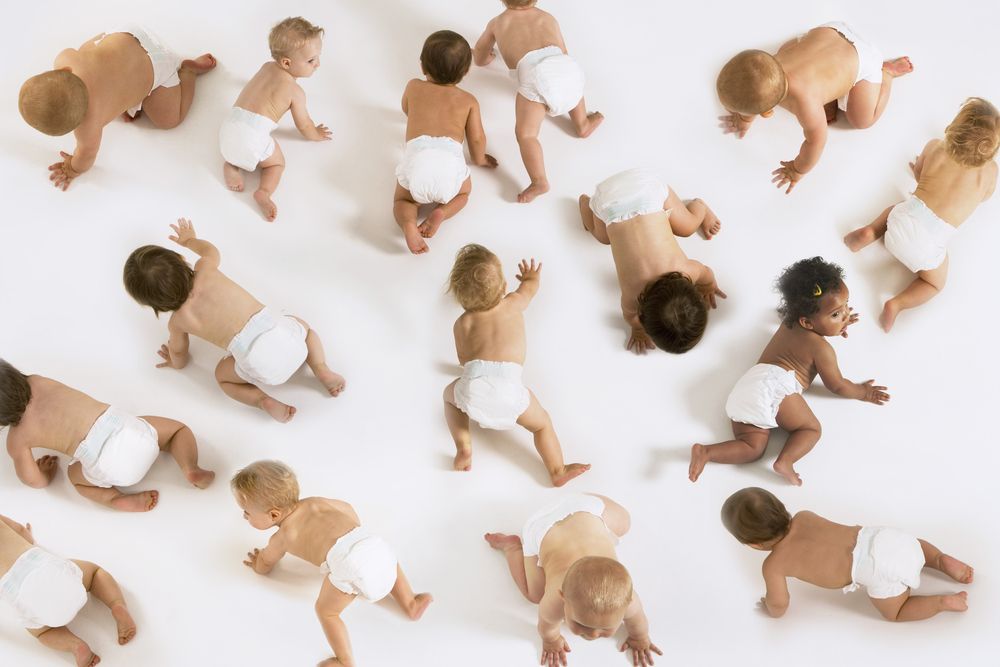The age old problem of nappy rash
Published on Wednesday, 21 August 2019
Last updated on Tuesday, 31 December 2019

Nappies come part and parcel with parenting. From the day your baby is born to the night they're completely toilet-trained, you will change thousands of soggy, soiled, and downright stinky nappies. Although there’s no avoiding this responsibility, modern manufacturers are looking at high-tech ways to keep little bottoms clean and dry.
The smart nappy promises to make things easier for parents and more comfortable for babies, with Huggies launching a nappy that monitors babies’ poo and wee with a Bluetooth sensor. Alphabet, Google's parent company, submitting a patent for a carbon-fibre-laced nappy that detects changes in its equilibrium, and Pampers testing individualised nappies that fit to your baby's 'wee points' to maximise absorption.
Whether you choose classic cloth nappies or modern disposables, though, nappy rash is an age old problem for baby bits. Here's what you need to know about this irritating ailment and how you can prevent it.
What does nappy rash look like?
Nappy rash is a common problem for infants, and it makes the sensitive skin under their nappy appear red and raw. The rash can have a spotty look, especially on the edges, and it's often sore or itchy when wiped. Unsurprisingly, nappy rash can leave your baby feeling cranky and unsettled.
What causes nappy rash?
There are two main culprits behind nappy rash: wetness and irritation.
Even if your baby seems happy enough sitting in a soiled nappy, constant moisture from poo and wee, and rubbing from the nappy itself can cause skin damage.
KidsHealth says, 'The longer a nappy is wet or soiled, the higher the risk there is of damage to the skin,' and nappy rash is exacerbated by the irritating substances in a soiled nappy.
The rash can be furthered irritated by bacteria, a yeast infection, such as candida or thrush, as well as some baby wipes, soaps, and washing detergents.
How can you prevent and treat nappy rash?
As with many things, prevention is better than a cure, so it's important to:
- Change your baby's nappy frequently to keep the skin clean and dry. As a guide, you can expect to change your bub's nappy five to seven times a day while they're under the age of 12 months.
- Use a warm wet cloth, cotton wool or paper towel to wash their skin when you change each nappy. Some baby wipes contain alcohol and soap that aggravates the rash, so if you really love wipes, then choose fragrance-free brands made for sensitive skin.
- Apply a thick barrier cream, like zinc cream, at each nappy change to stop moisture and irritants touching the skin.
- Don't use talcum powder.
- Give your baby as much 'nappy-free time' as possible to let their sensitive skin breathe.
Day-to-day, you can use either disposable or cloth nappies, provided you change them regularly, but if you're going down the cloth route, make sure you rinse the nappies twice after washing to get rid of soap residue, dry them in the sun and wind, and use nappy liners.
If your baby's bottom does get irritated, then The Royal Children's Hospital of Melbourne, says, 'Using good-quality disposable nappies is the best way to treat nappy rash. Disposable nappies allow the moisture to be absorbed quickly, which keeps the skin dry.'
What should you do if the nappy rash persists?
If the rash isn't improving within one week, it's getting worse or it's severe, then you should seek advice from your family doctor.
An ongoing rash can point towards a skin infection, like thrush, or an underlying condition, like psoriasis, and help is at hand with medicated creams.
Those smart nappies may help modern parents going forward, but there's nothing wrong with good old-fashioned vigilance. Change your bub's nappies regularly to keep them, not just dry and clean, but rash-free, too.
References
KidsHealth
Plunket
The Royal Children's Hospital Melbourne
Related Articles

A Child Care Tool Kit for First Time Parents
A toolkit to support parents as they transition back to work after parental leave including financial support, work life balance and adjusting to child care.

7 life skills that will help your child succeed
The skills that will help your child thrive in their current and future lives; and how you can nurture these skills in your youngster's day-to-day activities.

Rise and Shine How night nannies are helping sleepy NZ families
Night nannies are popular in other parts of the world, and it seems New Zealanders are starting to see the light when it comes to this form of child care.
